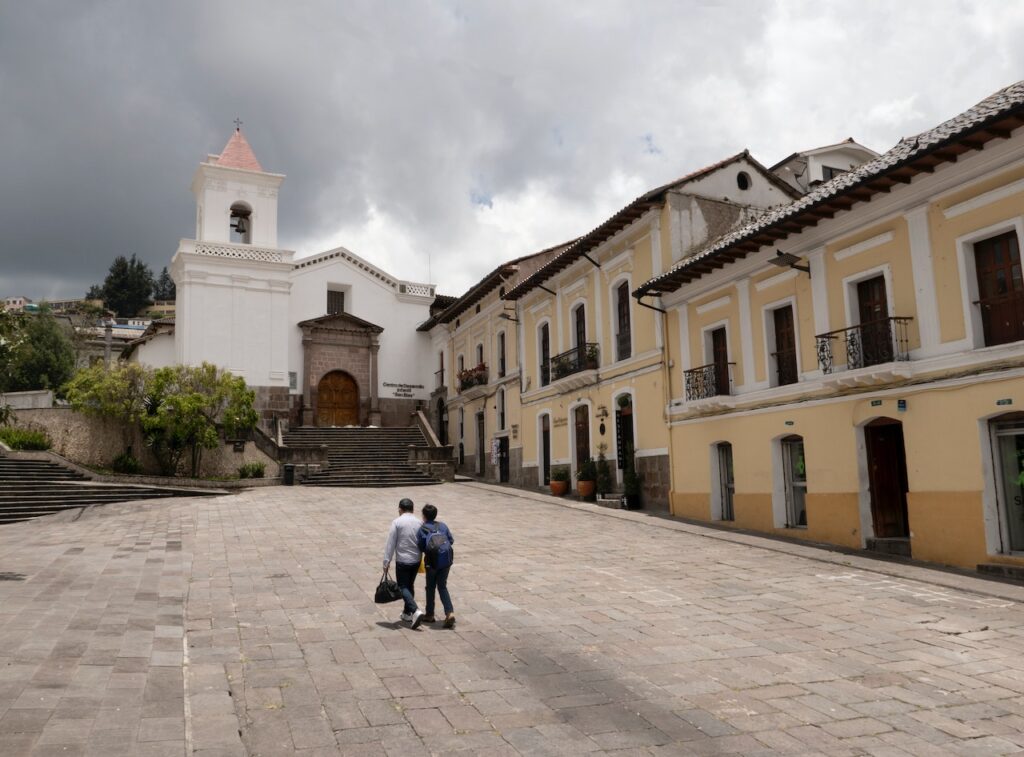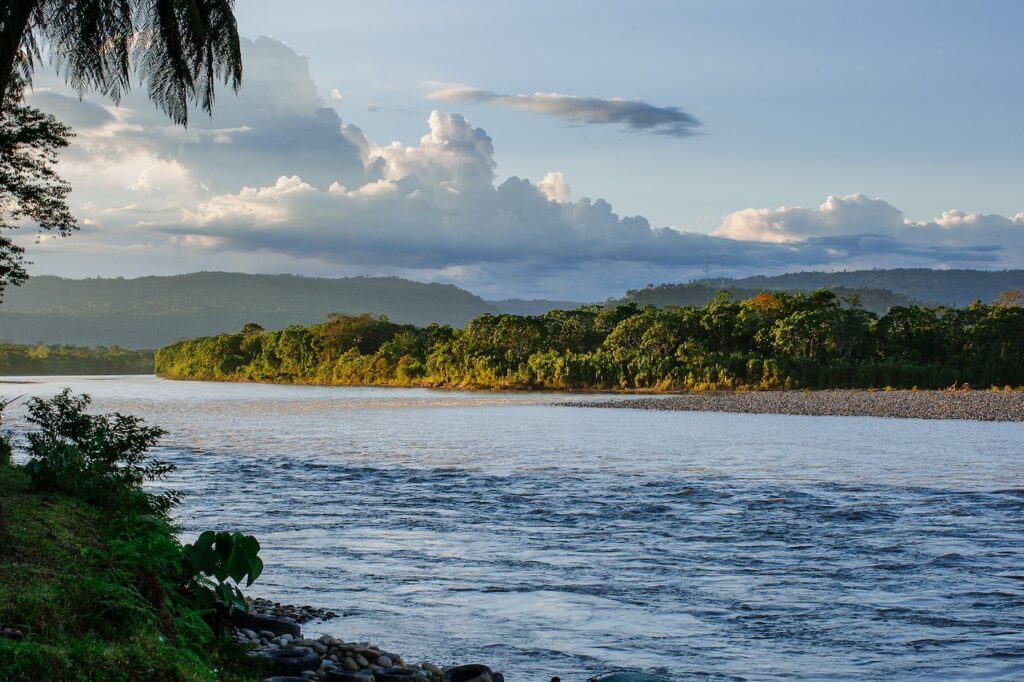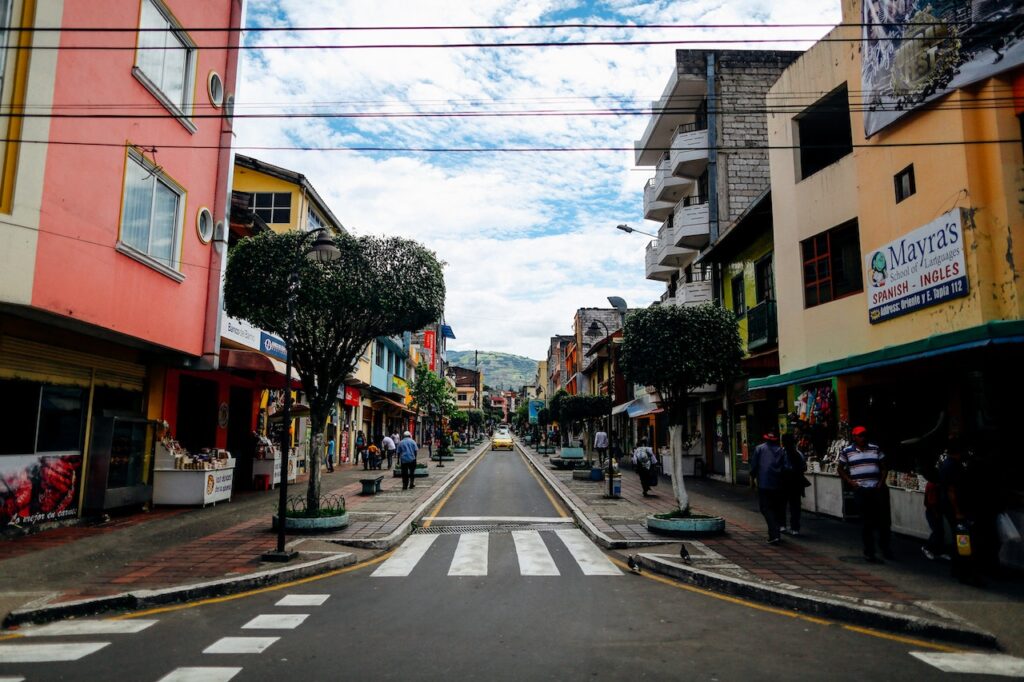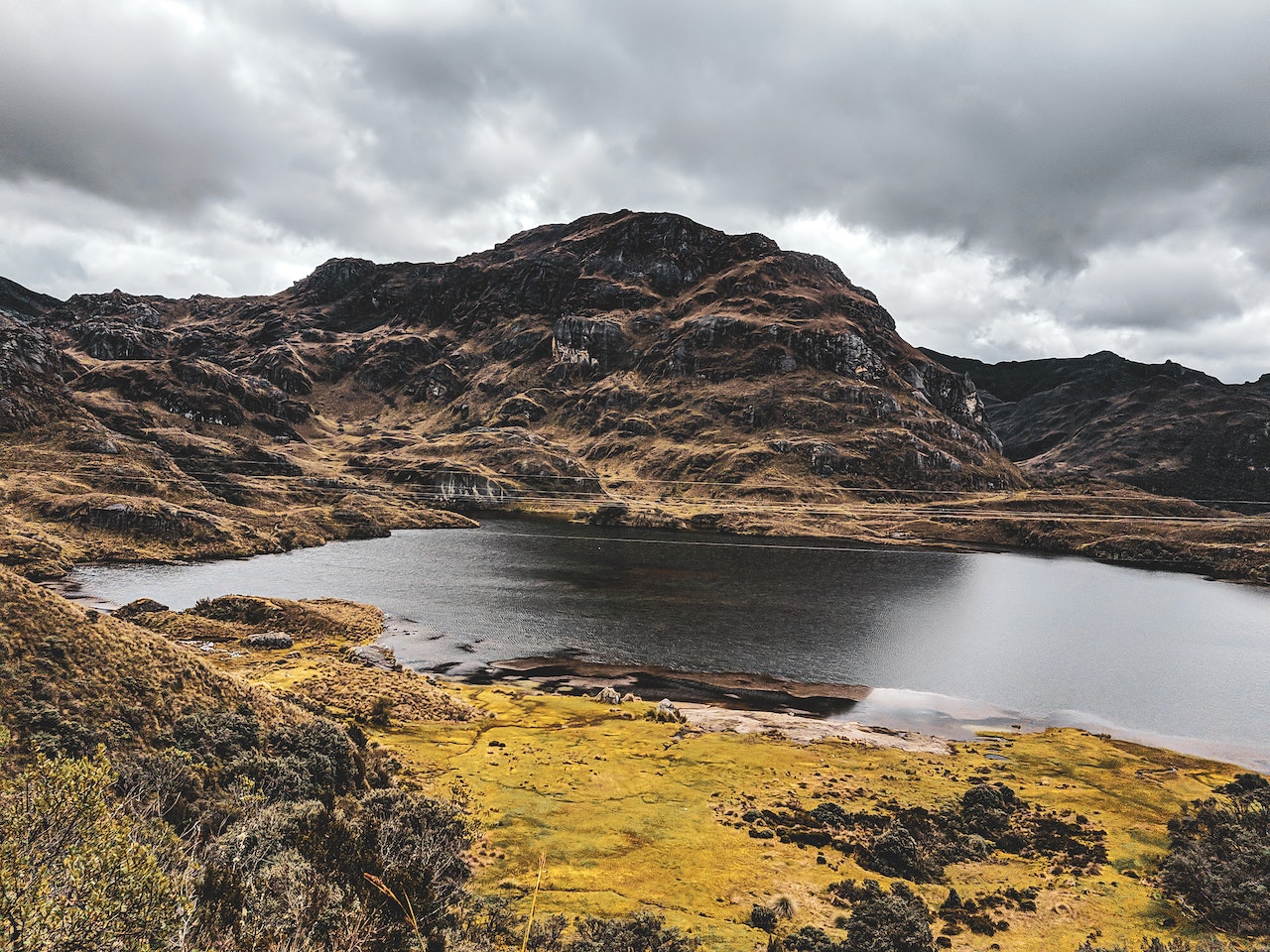Ecuador is a small country located in South America, known for its diverse culture and breathtaking landscapes. Despite its size, Ecuador is a country full of interesting facts that many people are not aware of. From its unique geography to its rich history and culture, there is always something new to discover about this fascinating country.
One of the most interesting facts about Ecuador is the origin of its name. Ecuador is derived from the Spanish word “ecuador,” which means “equator.” This is because the country is located directly on the equator line, which divides the Earth into the Northern and Southern Hemispheres. In fact, Ecuador is the only country in the world named after a geographical feature.
Another fascinating fact about Ecuador is its diverse geography. Despite its small size, Ecuador is home to a wide range of landscapes, from the Andes Mountains to the Amazon Rainforest and the Galapagos Islands. This diversity of ecosystems has made Ecuador one of the most biodiverse countries in the world, with thousands of plant and animal species found nowhere else on Earth.

Geographical Features
Galapagos Islands
The Galapagos Islands are a group of volcanic islands located about 600 miles off the coast of Ecuador. They are known for their unique wildlife, including giant tortoises, marine iguanas, and an array of bird species, many of which are found nowhere else in the world. The islands were made famous by Charles Darwin, who visited them in 1835 and used his observations of the unique species to develop his theory of evolution.
Andes Mountains
The Andes Mountains are a vast mountain range that runs from the northern tip of South America down to the southern tip of the continent, passing through several countries including Ecuador. Ecuador’s portion of the Andes is home to several towering peaks, including Mount Chimborazo and Cotopaxi, which are popular destinations for hikers and climbers.
Amazon Rainforest
Ecuador is home to a portion of the Amazon Rainforest, one of the most biodiverse regions on the planet. The rainforest is home to a vast array of plant and animal species, including monkeys, jaguars, and thousands of bird species. The region is also home to several indigenous communities who live off the land and have developed a deep understanding of the rainforest’s ecology.
Coastal Region
Ecuador’s coastal region is home to several beautiful beaches and important fishing communities. The region is also home to the city of Guayaquil, Ecuador’s largest city outside of Quito. The coastal region is an important economic hub for the country and is known for its delicious seafood.
Climate
Ecuador’s location on the equator means that it experiences relatively consistent temperatures throughout the year. However, the country’s varied geography means that different regions experience different climates. The coastal region is typically hot and humid, while the Andes Mountains are cooler and drier. The Amazon Rainforest is hot and humid year-round. The Galapagos Islands have a unique climate that is influenced by ocean currents and is generally cooler and drier than the mainland.
Overall, Ecuador’s diverse geography and climate make it a fascinating destination for nature lovers and adventure seekers alike.
History and Culture
Historical Overview
Ecuador has a rich and complex history that dates back to pre-Columbian times. The region was home to several indigenous groups, including the Inca, who established a vast empire that extended from modern-day Ecuador to Chile. In the 16th century, the Spanish arrived and colonized the area, introducing Christianity and European culture to the region.
Ecuador gained independence from Spain in 1822, after the Battle of Pichincha, led by the famous South American liberator Simon Bolivar. The country was later part of Gran Colombia, a short-lived federation that included Colombia, Venezuela, and Ecuador. In 1830, Ecuador became an independent nation with its own constitution and government.
Cultural Traditions
Ecuador is a country with a diverse cultural heritage that is reflected in its traditions, festivals, and cuisine. The country is home to several indigenous groups, including the Quechua and the Shuar, who have preserved their customs and traditions for generations.
One of the most famous cultural traditions in Ecuador is the Panama hat, which is not actually from Panama but from the coastal region of Ecuador. The straw hats are hand-woven from the leaves of the toquilla palm and are known for their quality and durability.
Ecuador is also known for its vibrant music and dance traditions, including the marimba, a percussion instrument made from wood, and the pasillo, a slow, romantic dance that originated in Ecuador in the 19th century.
Language
Spanish is the official language of Ecuador, but there are several indigenous languages still spoken in the country, including Quichua, Shuar, and Achuar. The government recognizes these languages as official and has implemented programs to preserve and promote them.
In 2008, Ecuador became the first country in the world to recognize the rights of nature in its constitution. The government has also established several UNESCO World Heritage Sites, including the Galapagos Islands, which are home to a unique ecosystem and several species of animals found nowhere else in the world.

Economy and Trade
Ecuador has a developing market economy that is highly dependent on exports, particularly oil and agricultural products. The country’s economy is the eighth largest in Latin America and has been growing at an average rate of 3.5% over the past decade.
Major Exports
Ecuador is a major exporter of bananas, shrimp, flowers, and cocoa. Bananas are the country’s largest export, accounting for over a quarter of all exports. Other important exports include petroleum, cut flowers, and fish.
Currency
The official currency of Ecuador is the US dollar, which was adopted in 2000 to stabilize the economy and eliminate hyperinflation. The use of the US dollar has helped to reduce inflation and increase foreign investment in the country.
Tourism
Tourism is an important sector of the Ecuadorian economy, with the Galapagos Islands being a major attraction for visitors. The country also boasts a rich cultural heritage and architectural history, with colonial cities such as Quito and Cuenca attracting many tourists.
In recent years, the government has made efforts to promote tourism in the country, investing in infrastructure and promoting Ecuador as a destination for adventure tourism and eco-tourism.
Overall, Ecuador’s economy has shown steady growth in recent years, driven by exports and foreign investment. While the country faces challenges such as high levels of poverty and inequality, its natural resources and growing tourism industry provide opportunities for continued economic development.
Capital and Major Cities
Ecuador is a country located in South America and bordered by Colombia to the north, Peru to the east and south, and the Pacific Ocean to the west. The country’s capital is Quito, which is located in the Andean region of the country and is the second-highest capital city in the world after La Paz, Bolivia.
Quito
Quito is the capital of Ecuador and has a population of approximately 2.8 million people. The city is located in the Andean region of the country at an altitude of 2,850 meters (9,350 feet) above sea level. Quito was founded in 1534 by the Spanish conquistadors and has a rich history and culture.
The historic center of Quito is one of the largest and best-preserved colonial centers in South America and was declared a UNESCO World Heritage Site in 1978. The city is home to many museums, churches, and other historical sites, including the Basilica del Voto Nacional, the Church and Monastery of San Francisco, and the Plaza de la Independencia.
Guayaquil
Guayaquil is the largest city in Ecuador and has a population of approximately 2.7 million people. The city is located on the Pacific coast of the country and is the main port for Ecuador’s exports. Guayaquil is known for its vibrant culture, nightlife, and cuisine.
The Malecon 2000 is a popular tourist attraction in Guayaquil and is a boardwalk that runs along the Guayas River. The boardwalk is home to many shops, restaurants, and parks and offers stunning views of the river and the city skyline. Other popular tourist attractions in Guayaquil include the Parque Historico Guayaquil, the Las Penas neighborhood, and the Cerro Santa Ana.
In conclusion, Quito and Guayaquil are the two major cities in Ecuador and offer visitors a glimpse into the country’s rich history, culture, and natural beauty.
Flora and Fauna
National Tree and Bird
Ecuador is known for its rich biodiversity, and it is home to a variety of flora and fauna that are unique to the region. The national tree of Ecuador is the cinchona tree, which is known for its medicinal properties. The bark of the cinchona tree contains quinine, which is used to treat malaria. The national bird of Ecuador is the Andean condor, which is one of the largest birds in the world.
Unique Wildlife
Ecuador is home to a variety of unique wildlife, including the Galápagos tortoise, which is the largest tortoise in the world. The Galápagos Islands are also home to a variety of other species that are found nowhere else on Earth, including marine iguanas, blue-footed boobies, and giant tortoises.
In addition to the wildlife found on the Galápagos Islands, Ecuador is also home to a variety of other species. The country is home to over 1,600 species of birds, including the Andean cock-of-the-rock, which is known for its bright orange plumage.
Ecuador is also home to a variety of reptiles, including the spectacled caiman, which is a type of crocodile that is found in the Amazon Basin. The country is also home to a variety of snakes, including the bushmaster, which is one of the most venomous snakes in the world.
Overall, Ecuador is a fascinating country with a rich diversity of flora and fauna. From the national tree and bird to the unique wildlife found on the Galápagos Islands, there is always something new and interesting to discover in this beautiful country.

Interesting Facts
Ecuadorian Cuisine
Ecuador is a diverse country, and its cuisine reflects that diversity. Ecuadorian cuisine is influenced by indigenous traditions, Spanish colonialism, and African and Asian immigration. One of the most famous Ecuadorian dishes is cuy, or guinea pig. While it may seem strange to some, cuy is a delicacy in Ecuador and is often served during special occasions. Other popular Ecuadorian dishes include ceviche, locro de papas (potato soup), and churrasco (grilled steak).
Ecuador’s Flag
Ecuador’s flag is a tricolor of red, yellow, and blue. The red represents the blood shed by those who fought for independence, the yellow represents the country’s abundant natural resources, and the blue represents the sky and sea. The flag also features an emblem in the center, which includes an Andean condor, a sun, and a river.
Ecuador and Space
Ecuador is one of the smallest South American countries, but it has made significant contributions to space exploration. In 2013, Ecuador launched its first satellite, NEE-01 Pegaso, which was built by Ecuadorian students and scientists. The satellite was designed to monitor the environment and natural disasters. Ecuador also has a space agency, called the Ecuadorian Civilian Space Agency.
Expat Community
Ecuador has become a popular destination for expats from all over the world. The country’s low cost of living, beautiful scenery, and warm climate make it an attractive option for retirees and digital nomads. Many expats also appreciate Ecuador’s friendly locals and laid-back lifestyle. The largest expat communities in Ecuador are located in Quito, Cuenca, and the coastal city of Manta.




